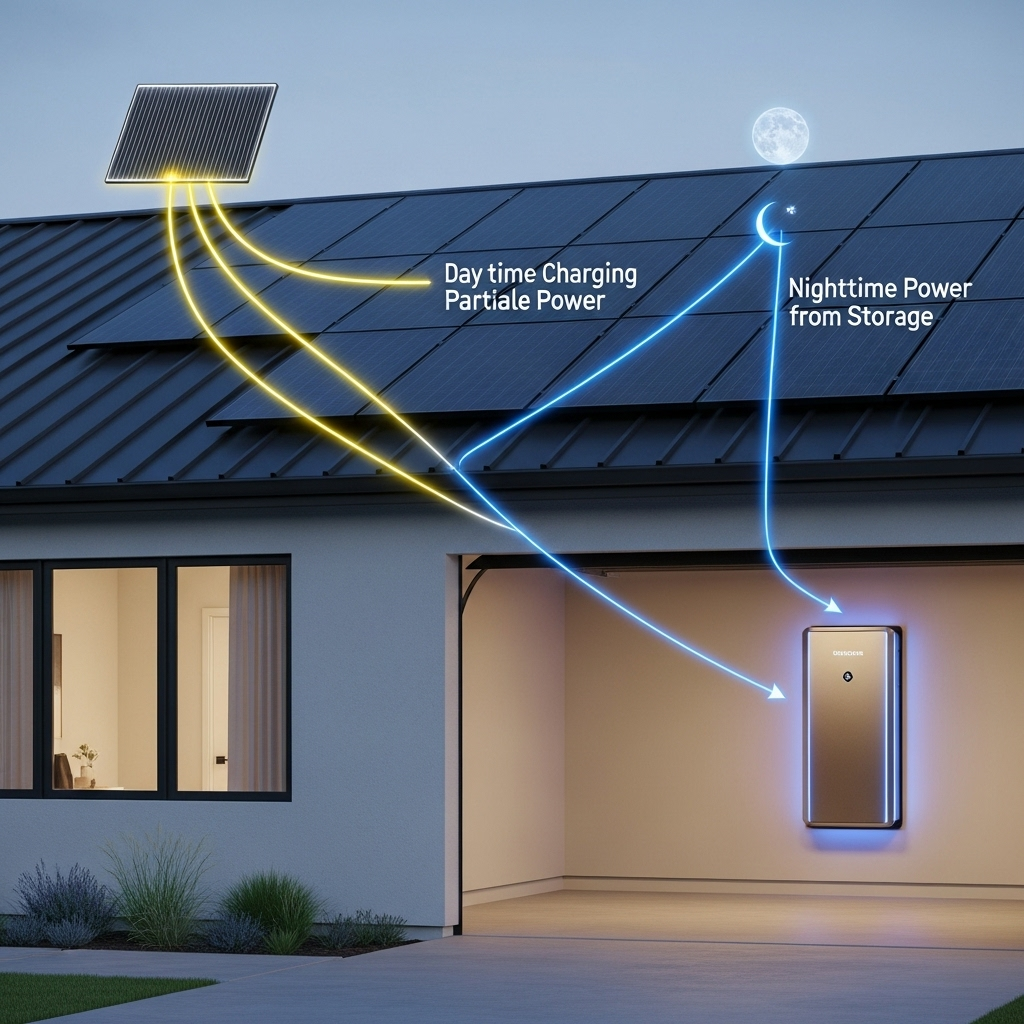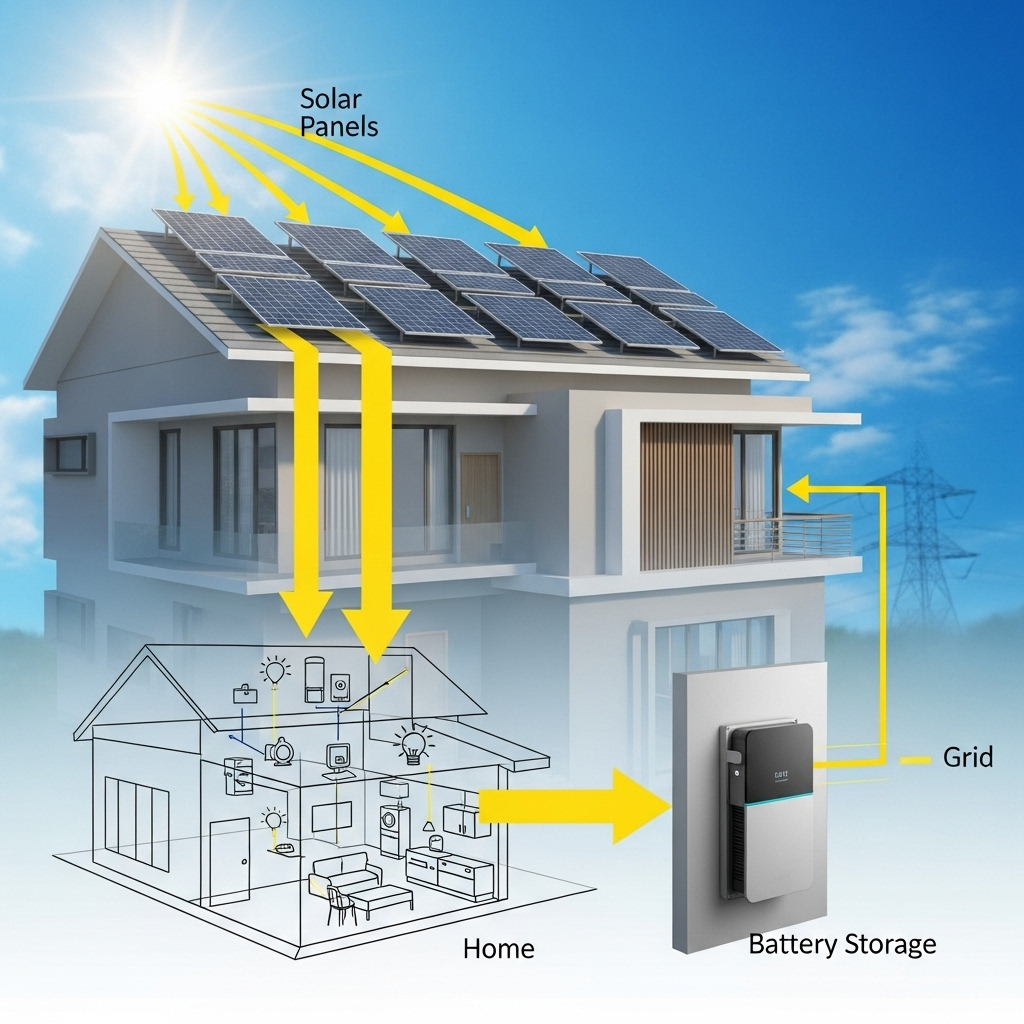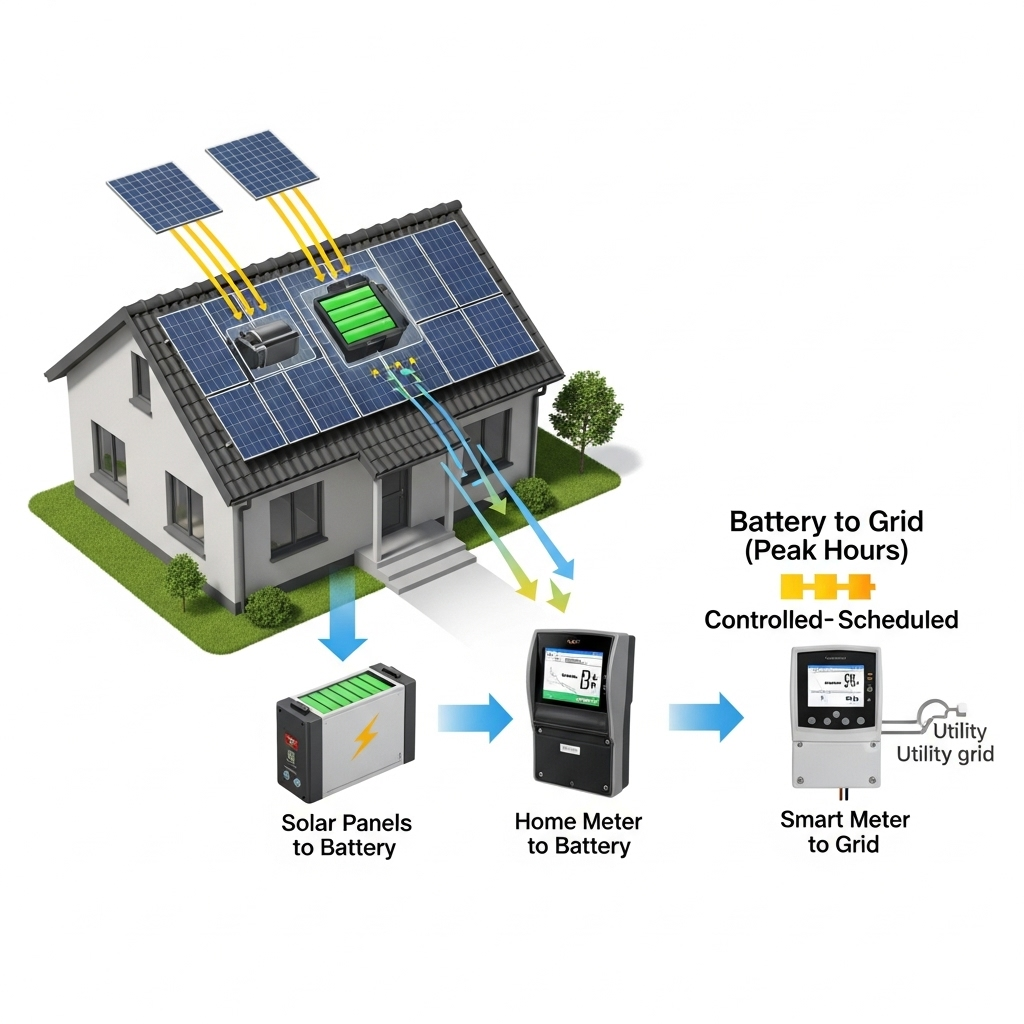As solar panels become a common sight on rooftops, the conversation is shifting from simple adoption to sophisticated integration. A key part of this discussion revolves around how solar owners are compensated for the extra electricity they send to the grid. Traditional models like net metering are facing scrutiny for creating an imbalance, sometimes leading to what are known as cross-subsidies. This can mean that households without solar panels end up paying a bit more for grid upkeep.
The goal is to find a fair middle ground. We need a blueprint for export compensation that rewards solar owners for their contribution without placing an unfair burden on other utility customers. This new approach ensures the grid remains stable and financially sound while promoting the growth of clean energy.
The Core Challenge: Understanding DER Cross-Subsidies
The concept of a cross-subsidy sounds complex, but it's a straightforward issue. When policies do not accurately account for the costs of maintaining the electrical grid, they can inadvertently shift those costs from one group of consumers to another. This is the central challenge facing Distributed Energy Resources (DERs) like rooftop solar today.
What Are Cross-Subsidies in Solar?
Under traditional net metering, the grid is treated like a savings account. For every kilowatt-hour (kWh) of solar energy a home exports, it gets a credit for one kWh to use later, typically valued at the full retail electricity price. This retail price includes not just the cost of energy, but also the costs for maintaining the grid's infrastructure—the poles, wires, and transformers.
When solar owners offset most or all of their bills, their contribution to these fixed grid costs can drop significantly. However, the costs to maintain the grid do not disappear. They are instead spread across the remaining customer base, including those who do not have solar. This is the essence of a DER cross-subsidy. The International Energy Agency (IEA) notes in its report, System Integration of Renewables, that such mechanisms were designed when solar penetration was low and the grid could easily act as a buffer, a condition that is rapidly changing.
The Impact on Utilities and Non-Solar Customers
This financial shift creates pressure on utilities and non-solar customers alike. As more high-consumption customers adopt solar to lower their bills, the utility's revenue for grid maintenance declines. Research from the IEA on Unlocking the Economic Potential of Rooftop Solar PV in India highlights a similar dynamic, where the most motivated customers to adopt solar are those paying the highest rates, which in turn increases the cross-subsidy deficit for the utility. To cover the shortfall, utilities may need to raise overall rates, impacting low-income families and renters who cannot install solar the most.
Designing Modern Compensation Structures
To solve the cross-subsidy issue, regulators are developing more sophisticated compensation models. These new structures aim to accurately value exported solar energy while ensuring everyone pays their fair share for grid access. The industry is moving away from simple netting and toward dynamic, value-based compensation.
The Shift to Net Billing
Net billing is a leading alternative to net metering. With this model, you still pay the full retail rate for electricity you pull from the grid. However, the energy you export is credited at a different rate, one that is often lower than the retail price. This export credit is typically based on the utility's 'avoided cost'—the amount it would have paid to generate that power itself or buy it from a wholesale market.
This structure more accurately reflects the value of the exported electricity to the utility at the moment it is delivered. It also creates a powerful financial incentive for solar owners to use as much of their own generated power as possible, a practice known as self-consumption.
Value of Solar (VOS) and Time-of-Use (TOU) Tariffs
Other advanced models go even further. Value of Solar (VOS) tariffs calculate a compensation rate based on a broad set of factors, including the value of the energy, its contribution to grid stability, and its environmental benefits. This provides a more holistic valuation.
Time-of-Use (TOU) tariffs offer different export rates depending on the time of day. Energy exported during late afternoon peak demand, when the grid is most strained, earns a higher credit than energy exported at noon when solar generation is abundant. This encourages behavior that directly helps the grid. As the IEA points out, variable pricing can effectively encourage system-friendly design choices.
The Critical Role of Energy Storage in a Fair System
As export compensation rates change, the financial equation for solar also evolves. The solution is not to abandon solar, but to enhance it. Home battery storage is the key technology that makes solar financially attractive and beneficial for the entire grid under modern compensation rules.
Maximizing Self-Consumption with Batteries
The primary benefit of a battery is its ability to store your excess solar energy. Instead of exporting your valuable solar power for a low credit during the day, you can save it. Then, in the evening when the sun goes down and electricity rates are often highest, you can power your home with your own stored, clean energy. This dramatically reduces the amount of expensive electricity you need to buy from the grid, giving you control over your energy bills regardless of export rate policies.
Choosing the Right Storage System
Not all storage systems are created equal. To maximize your benefits, understanding key metrics is crucial. For example, factors like a battery's Depth of Discharge (DoD) and round-trip efficiency directly impact how much stored energy you can actually use. A comprehensive look at the ultimate reference for solar storage performance can help you evaluate these technical specifications to ensure you get the most value from your investment.
| Scenario | Grid Imports (kWh/day) | Grid Exports (kWh/day) | Daily Electricity Cost |
|---|---|---|---|
| Solar Only (Net Billing) | 8 kWh | 10 kWh | $1.80 |
| Solar + Storage (Net Billing) | 1 kWh | 1 kWh | $0.15 |
*Assumptions: Retail rate = $0.30/kWh; Export credit = $0.12/kWh; Daily home usage = 20 kWh; Daily solar generation = 20 kWh. Costs are illustrative.
A Blueprint for Policymakers and Regulators
Creating a stable and equitable energy future requires thoughtful policy. A successful transition away from legacy compensation structures involves a clear blueprint that balances innovation with economic stability for all parties.
Gradual Transition and Stakeholder Engagement
Abrupt policy changes can disrupt the market and harm consumer confidence. A phased transition from net metering to models like net billing allows the industry and homeowners to adapt. It is vital to involve all stakeholders in this process—utilities, solar installers, consumer advocates, and regulators—to develop solutions that are fair and sustainable.
Incentivizing Technology Adoption
Policies should not only reform compensation but also encourage the adoption of technologies that enhance grid flexibility. This includes incentives for installing battery storage, smart inverters, and other DERs that can provide valuable grid services. As highlighted in the IEA's China Power System Transformation report, without appropriate incentives, system operators may not be motivated to provide services they are technically capable of delivering. Rewarding performance and reliability will build a more resilient and efficient grid.
Your Path to Energy Independence
The landscape of solar compensation is clearly evolving. The move is toward smarter, fairer systems that accurately reflect the value of distributed energy. While this may signal the end of overly simple net metering policies, it opens the door to a more sophisticated and resilient energy system.
For homeowners, this shift underscores the growing importance of energy storage. By pairing solar panels with a battery, you take control of your energy production and consumption. You protect yourself from changing utility rates and export policies while increasing your energy independence. This is the path forward—a system that is not only clean but also equitable and self-sufficient.
Disclaimer: This article is for informational purposes only and does not constitute financial or legal advice. Consult with a qualified professional before making any investment decisions.
Frequently Asked Questions
What is a DER cross-subsidy?
A DER (Distributed Energy Resource) cross-subsidy occurs when one group of utility customers pays more for grid services to cover the costs not paid by another group. In solar, it often refers to non-solar customers bearing a larger portion of grid maintenance costs because net metering allows solar owners to pay very little for their grid use.
Is net billing bad for solar owners?
Not necessarily. While net billing typically offers lower credits for exported energy compared to net metering, it creates a strong incentive to use your own solar power. By adding a battery, you can store excess energy for later use, significantly reducing your reliance on purchasing expensive grid electricity and maximizing your savings.
How does energy storage help avoid the negative impacts of changing export rates?
Energy storage allows you to become your own primary energy source. Instead of exporting cheap power to the grid, you store it in a battery. You then use that stored energy during the evening or on cloudy days, avoiding the need to buy power at high retail rates. This strategy, known as self-consumption, makes you less dependent on export compensation rules and gives you more control over your energy bills.
What is a 'cost-reflective' tariff?
A cost-reflective tariff is an electricity pricing plan where the rates are designed to accurately reflect the utility's cost of generating and delivering power at different times and locations. This often involves higher prices during peak demand periods and lower prices during off-peak times, sending clear economic signals to consumers about when it is best to use or export energy.





Leave a comment
All comments are moderated before being published.
This site is protected by hCaptcha and the hCaptcha Privacy Policy and Terms of Service apply.